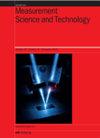ConvGRU-MHM:用于减缓全球导航卫星系统多径的 CNN GRU 增强型 MHM
IF 3.4
3区 工程技术
Q1 ENGINEERING, MULTIDISCIPLINARY
引用次数: 0
摘要
在高精度全球导航卫星系统(GNSS)短基线定位中,多径是误差的主要来源。如果站点环境是准静态的,则可以利用卫星的重复周期来生成随时间或空间变化的多径模型,以减少多径。然而,基于卫星力学构建的多径模型普遍存在两个问题:(1) 当上述模型应用于长时间跨度的多径减缓时,精度会下降;(2) 在构建基于卫星的空间相关多径模型的空间和时间网格时,平衡计算效率和空间分辨率是一项挑战。为了解决这些问题,我们提出了一种在观测领域的卷积神经网络门控递归单元增强多径半球图(ConvGRU-MHM)。该方法直接挖掘仰角、方位角和多径的深层特征以及它们之间的映射关系,建立实时预测模型。当卫星的实时位置被置于预训练模型中时,就能得到预测的多径,并返回观测方程进行多径减缓。我们比较了恒星滤波(SF)和多径半球图(MHM)与 ConvGRU-MHM 的多径减缓性能,以证明所提方法的优势。实验结果如下(1) 在短时间内(前 20 天),ConvGRU-MHM 在 E/N/U 方向的平均精度提高幅度优于 SF 和 MHM;(2) 在长期内(50 天后),ConvGRU-MHM 在 E/N/U 方向的平均精度提高幅度比 SF 和 MHM 高 10-20%。作为一种轻量级模型,ConvGRU-MHM 可有效提高形变监测和地震研究等领域中 GNSS 实时监测的测量精度。本文章由计算机程序翻译,如有差异,请以英文原文为准。
ConvGRU-MHM: A CNN GRU-enhanced MHM for mitigating GNSS multipath
In high-precision global navigation satellite system (GNSS) short-baseline positioning, multipath is the main source of errors. If the station environment is quasi-static, repeat periods of satellites can be utilized to generate time- or space-dependent multipath models to mitigate multipaths. However, two general problems are associated with the multipath models constructed based on satellite mechanics: (1) an accuracy decrease occurs when the above models are applied to multipath mitigation over a long time-span; (2) when constructing the spatial and temporal grids of the satellite-based spatially dependent multipath model, it is challenging to balance computational efficiency and spatial resolution. We propose a convolutional neural network-gated recurrent unit enhanced multipath hemispherical map (ConvGRU-MHM) in the observational domain to address these problems. The proposed method directly mines the deep features of elevation, azimuth angle, and multipath and the mapping relationship between these to establish a real-time prediction model. The predicted multipath is obtained and returned to the observation equation for multipath mitigation when the real-time position of the satellite is placed in the pre-trained model. We compared the multipath mitigation performance of sidereal filtering (SF) and a multipath hemispherical map (MHM) with that of the ConvGRU-MHM to demonstrate the advantages of the proposed method. The experimental results are as follows: (1) in the short time-span (first 20 days), the mean accuracy improvements of the ConvGRU-MHM in the E/N/U direction performed better than those of the SF and MHM; and (2) in the long-term time (after 50 days), the mean accuracy improvements of the ConvGRU-MHM in the E/N/U direction are higher than that of the SF and MHM by 10–20%. As a lightweight model, the ConvGRU-MHM can effectively improve the measurement accuracy of GNSS real-time monitoring in fields, such as deformation monitoring and seismic research.
求助全文
通过发布文献求助,成功后即可免费获取论文全文。
去求助
来源期刊

Measurement Science and Technology
工程技术-工程:综合
CiteScore
4.30
自引率
16.70%
发文量
656
审稿时长
4.9 months
期刊介绍:
Measurement Science and Technology publishes articles on new measurement techniques and associated instrumentation. Papers that describe experiments must represent an advance in measurement science or measurement technique rather than the application of established experimental technique. Bearing in mind the multidisciplinary nature of the journal, authors must provide an introduction to their work that makes clear the novelty, significance, broader relevance of their work in a measurement context and relevance to the readership of Measurement Science and Technology. All submitted articles should contain consideration of the uncertainty, precision and/or accuracy of the measurements presented.
Subject coverage includes the theory, practice and application of measurement in physics, chemistry, engineering and the environmental and life sciences from inception to commercial exploitation. Publications in the journal should emphasize the novelty of reported methods, characterize them and demonstrate their performance using examples or applications.
 求助内容:
求助内容: 应助结果提醒方式:
应助结果提醒方式:


